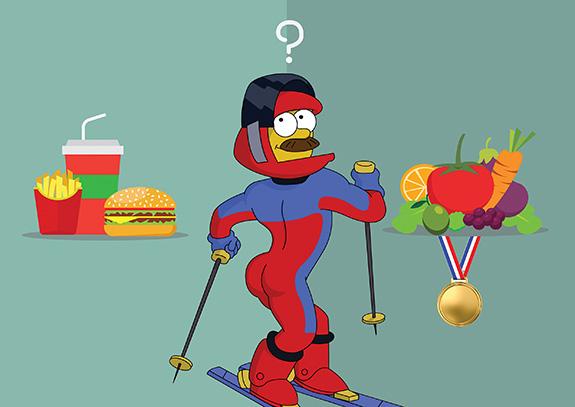The Speed of Lite
You get out what you put in.
In ski racing, whether contesting the Olympic downhill or aiming to bury your buddy in the Community Dual GS at Bridger, mass is your friend. But it’s also your enemy. Under the influence of gravity, heavy objects moving downhill attain velocity more quickly than those that are lighter. There’s a reason that the “big guys” tend to dominate the speed events. Some of it has to do with the muscle mass required to resist the g-forces at 80mph, but just the additional weight is helpful. There are, however, some notable exceptions. Daron Rahlves, the American speed icon and compatriot of Bode Miller, was smaller of frame and a good 40 pounds lighter than many of his competitors.
The positive side of mass in alpine events assumes, of course, that the weight the competitor is carrying is functional mass composed of protein, iron, amino acids, and the like, fueled by tiny capillaries carrying oxygenated red blood cells. We’re talking muscle here, not mass of the other sort—you know, the more colorless type that tends to accumulate around the waistline and abdomen of men and on the hips and tummies of women.
Mass in the form of fat is a detriment to the ski racer. It impedes the explosive, precise movements required in slalom and strains the athlete’s balance and endurance in downhill. In some cases, it even thwarts the ability to assume the most efficient postures related to various events. It’s equally unwieldly attempting to skin up the backcountry or stay upright in the A-Z Chutes after a fresh dump at Big Sky.
Americans have a culturally peculiar relationship with weight. Though we have perhaps more food choices than any other country on Earth, we are among the most overweight folks in the world, for a variety of reasons. We consume too much sugar. We consume too much fat. We simply consume too much food as portion size has grown dramatically since the 1950s and we now spend more money as a country eating out than on groceries.
The crux of maintaining an ideal weight is simple. It’s the old “calories in, calories out,” equation with very heavy (pun intended) emphasis on the first part of the equation. Burning more calories through exercise, however, often seems to be the preferred weight-management mindset for adult athletes (calories out). But it’s extremely inefficient for the average American who makes typical food choices.
Consider this: on a given winter day, I made a 5.2-mile run. According to the activity summary on my smarter-than-I-am watch, I burned 624 calories. If, in the quest to drop a few pounds, I add an additional mile tomorrow morning, I’ll scorch an extra 120 calories.
But suppose tomorrow a co-worker (that would be my wife) offers me two Keebler fudge-stripe cookies (140 calories) with afternoon coffee. I indulge and immediately replenish the calories torched in the extra mile and put 20 more in the bag. However, instead of gulping my grape juice at full strength with breakfast, I mix it 50/50 with water which still tastes fine. That little move reduces my actual juice intake from 8 oz. to 4 oz. and saves me 75 calories (it would be 55 with orange juice). And so, Mr. or Ms. Athlete, what’s tougher, running an extra mile or skipping two cookies? Or diluting your fruit juice for a couple of breakfasts?
Now, let’s go absolutely loco. Pass on the chocolate lava cake at your favorite restaurant (eating out, by the way, is your “calories in” nemesis) and you can skip the whole damn run in relation to calories. Roughly speaking, 3,500 unneeded calories adds a pound of fat to the adult body; burning 3,500 calories in excess of body maintenance sheds a pound. For most Americans it’s the “calories in” part of that equation that’s the determining factor in weight management because it is so mathematically difficult to offset sub-optimal food choices with exercise. Adopt the attitude that you exercise regularly primarily for the sake of strength, endurance, and other health benefits and secondarily to keep an ideal weight. Tackle the body-mass issue most mindfully in relation to “calories in” and you’ll more easily find success with weight management... and kill it in the Community GS this winter.













